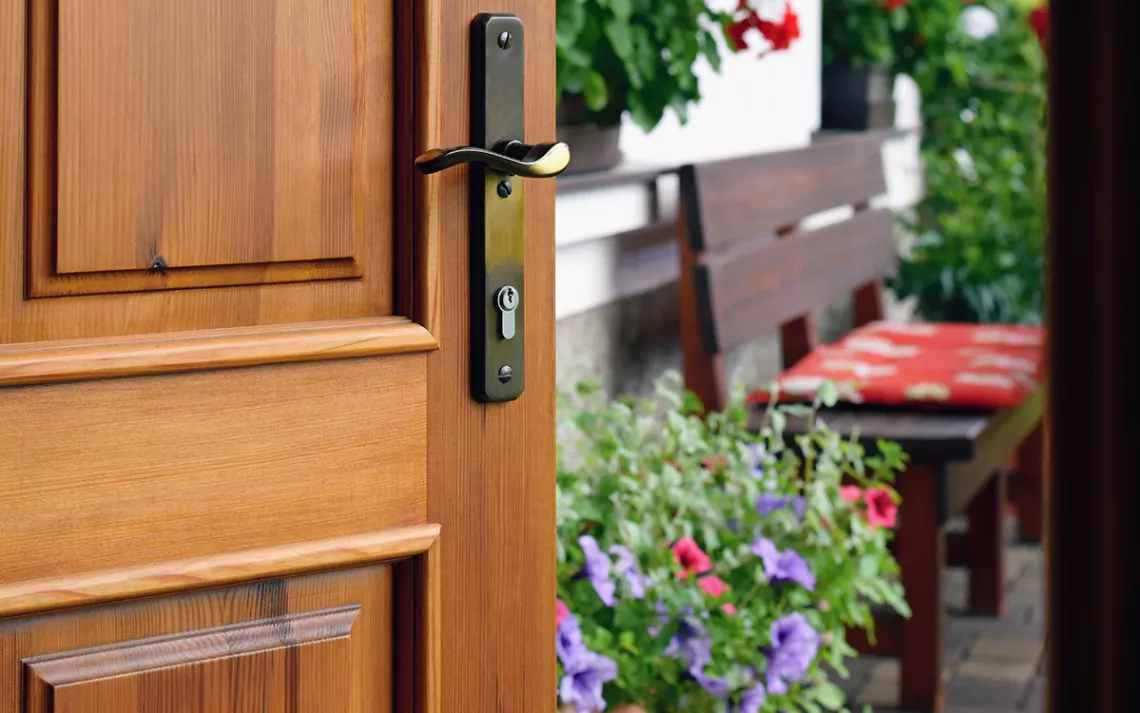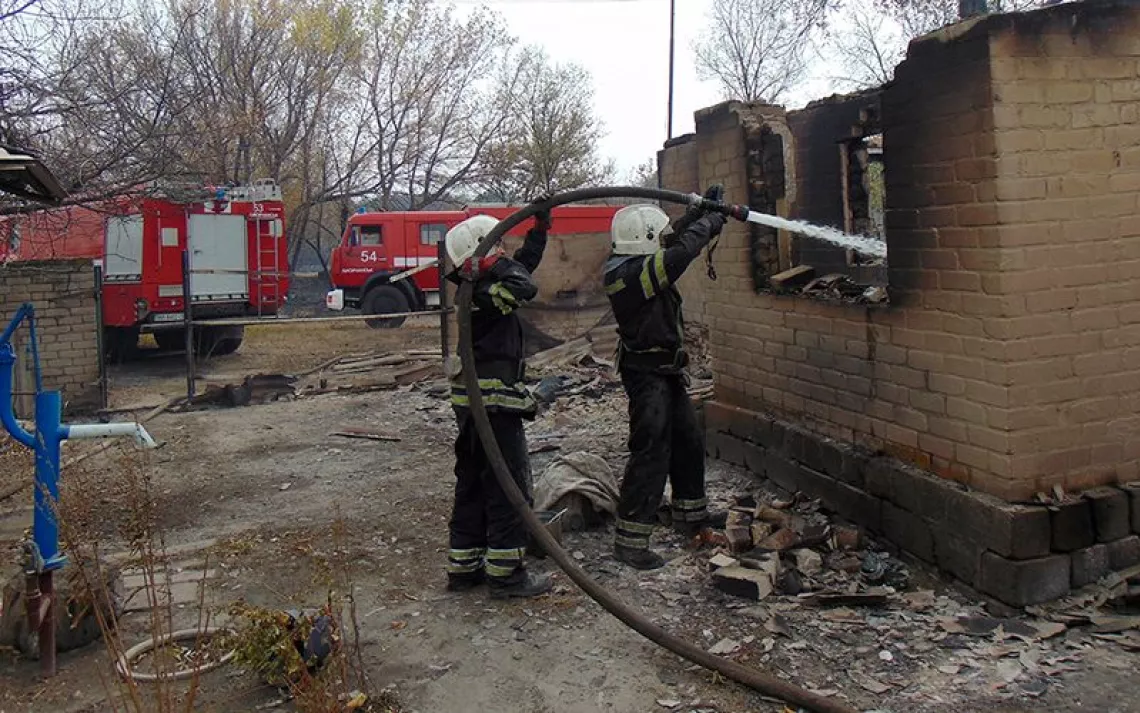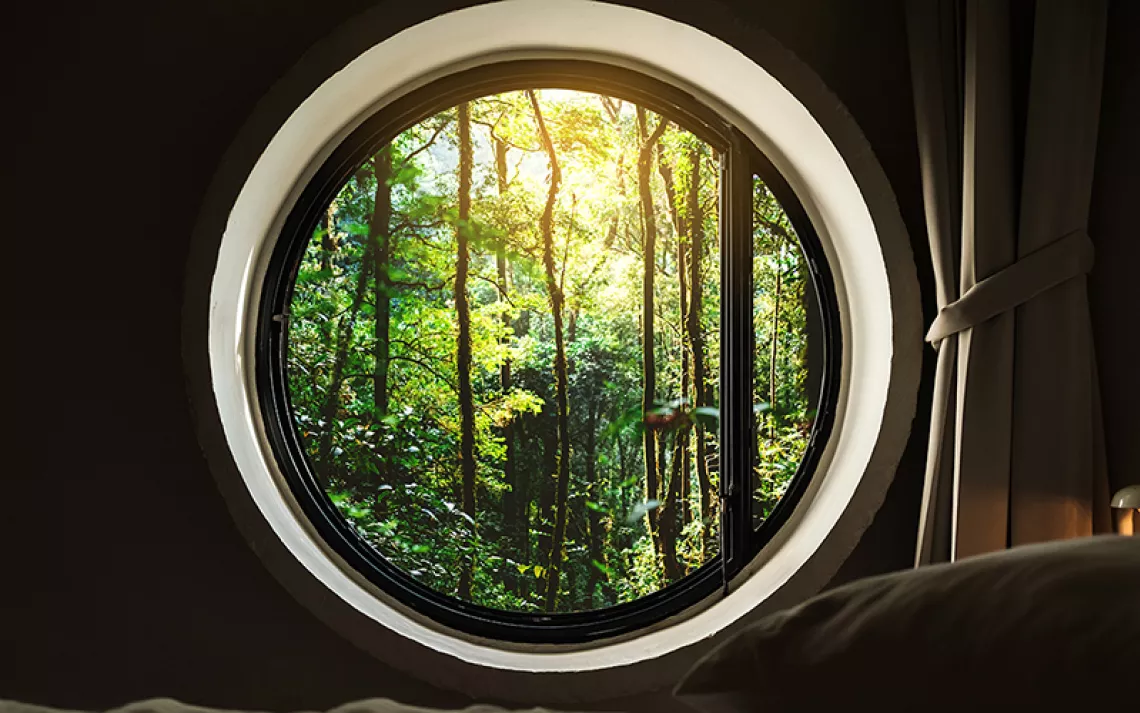Nature Never Closes
Even in the midst of a pandemic, we can experience nature connection

Photo by Tunatura/iStock
When the San Francisco Bay Area launched “shelter in place” in March, I naively interpreted the directive as “time to reflect.” Hardly. Like many, I don’t recall ever working more intensely. Add to this the media onslaught around a deadly pandemic and the result has been a perfect storm for stress.
A few days ago, after what seemed like a dozen Zoom meetings, I donned a pair of hiking boots and headed outdoors. Initially, both my body and brain were sluggish, burdened by the day’s challenges. But within minutes, my limbs loosened, my breathing became more rhythmic, and my mood lightened.
Once I was on the trail, heading skyward, my senses began to open. Rounding a tight switchback, I was greeted by an explosion of tiger-orange California poppies. Cool ocean air caressed my fatigued face. Leg muscles warmed to the incline. A silent, soaring turkey vulture tilted in the breeze. One more deep inhalation and there it was, that familiar feeling of connection.
John Muir once said, “And into the forest I go, to lose my mind and find my soul.” For me, these words have become something of a mantra.
By forcing us into isolation, the coronavirus has underscored a second pandemic already well underway: one of loneliness, depression, and anxiety. All three ailments are rampant and growing, pushing deeper and deeper into childhood. Today, the majority of teens report going to bed most nights feeling anxious and depressed. Like COVID-19, this health crisis was accompanied by an indoor migration that turned our world upside down. Yet, perhaps because it was more gradual, we barely seemed to notice.
The average American kid now spends six to 10 hours a day gazing at screens and mere minutes playing outdoors. This reality stands in stark contrast to the free-range, nature-rich childhood that most of my generation enjoyed. A growing mountain of evidence links the duo of lost green-time and skyrocketing screen-time to the rapidly growing numbers of lonely, anxious, and depressed humans. Perhaps the greatest irony of our interconnected world, with its 24/7 access to a planet-full of stimulation, is this tsunami of loneliness and disconnection. Exacerbating matters is a parallel and equally severe increase in rates of such ailments as obesity, ADHD, Type II diabetes, and even myopia, all linked to indoor lifestyles.
Abundant evidence, most of it collected in the past two decades, demonstrates that time spent in natural settings can decrease stress, depression, anxiety, and blood pressure while boosting your immune system, alertness, and sense of calm. And, remarkably, nature’s positive effects tend to increase in proportion with biological diversity; in other words, the greater the variety of species, the healthier we are. For kids, playing outdoors is also critical for developing a diverse suite of physical and mental capacities, including fine and gross motor skills, balance, imagination, creativity, and cooperation.
More fundamentally, we’ve forgotten that we are nature. Whether you’re conscious of it or not, you cannot help but be intimately connected with the world around you. Every breath of air, sip of water, and bite of food you take comes from nature. The natural world exists not only in wild and majestic national parks but also among the mushrooms and grasses pushing through the city sidewalk. Author Richard Louv, in his recent book Our Wild Calling, argues that we suffer from species loneliness driven by our perceived disconnect from the natural world. I could not agree more.
The remedy, of course, is to get outside, and take the family with you. And the wilder the place, the better!
The coronavirus pandemic has quickly become a visceral reminder of our need for nature connection. Shortly after sheltering-in-place began, droves of people flocked to beaches, parks, and hiking trails, forcing officials to shut down or limit access to some natural areas. On the flip side, for many children and youths, the pandemic has become one more excuse to dive even deeper into those addictive glowing screens. Online education has blurred with social media and gaming as many parents suddenly find themselves juggling work, childcare, and homeschooling. The good news is that nature is an ever-available respite from this indoor chaos, and just a little bit of outdoor time—even 30 minutes a day—can go a long way.
But how can we connect with nature safely during the COVID-19 crisis? Here are a few tips.
First, head out alone or with family members and stay close to home. Traveling to other communities is strongly discouraged because of the potential for virus spread. Second, check the rules and public health guidelines in your area. In some places, beaches, parks, and/or trails are closed to prevent crowds from gathering. Third, stay at least six feet apart from other trail users, even if that means stepping off the trail. This is the time to avoid dangerous spots, particularly narrow paths with steep drops; the last thing anyone needs right now (or ever) is a trip to the ER. Choosing dirt roads over trails can make it easier to relax and ensure a wide berth. Fourth, wear a mask at least when others are near. More and more, I’m seeing hikers, runners, and cyclists slipping bandanas over nose and mouth, bandit-style, when passing others. Finally, if possible, go early or late in the day to avoid crowds.
If you don’t have access to wild or semi-wild nature, don’t worry. A walk in the neighborhood or quiet time in the backyard can still be a powerful way to connect to nature. Slow down and pay attention to the array of nonhuman residents in your community. It’s springtime, so life is in full bloom. Look for flowers and pollinating insects like butterflies. If you’ve never tried birding, now might be a great time to learn about your avian neighbors, including the transient ones just visiting town to raise their young. Although urban stargazing tends to be far from ideal, a nighttime walk around the block can still be an amazing and memorable experience, especially for children.
If you have kids, consider taking them to a nearby park. But instead of the plastic and metal playgrounds, which could be coronavirus havens, encourage nature play using easily available loose parts like sticks, rocks, pinecones, and leaves. This kind of child-directed free play encourages abundant use of imagination and creativity. Watch closely to see where a child’s interests lie and, as much as possible, give them space. Play games that inspire youngsters to open their senses. How many different birds can you hear? Who can be the first to find five different kinds of trees? When in doubt, old standards like hide-and-seek, which requires stealth, are great for fostering nature connection.
If you have access to a smartphone, try downloading Seek, an app aimed at young nature lovers curious to identify local animals and plants. Or, for teens and adults, check out iNaturalist, the most popular citizen science app on Earth. With iNat, a simple photo allows you to take a stab at identifying any animal, plant, or fungus you come across. If your observation is confirmed or modified by an expert identifier, it becomes part of a permanent scientific database used to address a diverse range of questions around, for example, climate change and animal migrations.
What about those who live in unsafe neighborhoods, or places without much access to nature? If you have a garden, or even a window planter box, order some native plant seeds and nurture them to life. Those native plants will attract native insects, which in turn will tend to bring out native birds. Alternatively, for those with internet access, enjoy the amazing smorgasbord of online nature connection opportunities. To give one example, the California Academy of Sciences, where I work, has created a whole suite of live webcams and Academy@Home resources for teachers and parents. (The academy is also home to Seek and iNaturalist, the two smartphone apps noted above.)
In short, wherever you are, nature is close by, free of charge, and never closes. Odds are that you have many opportunities nearby to get outside, get into nature, and make your own discoveries. Enjoy the journey!
 The Magazine of The Sierra Club
The Magazine of The Sierra Club



